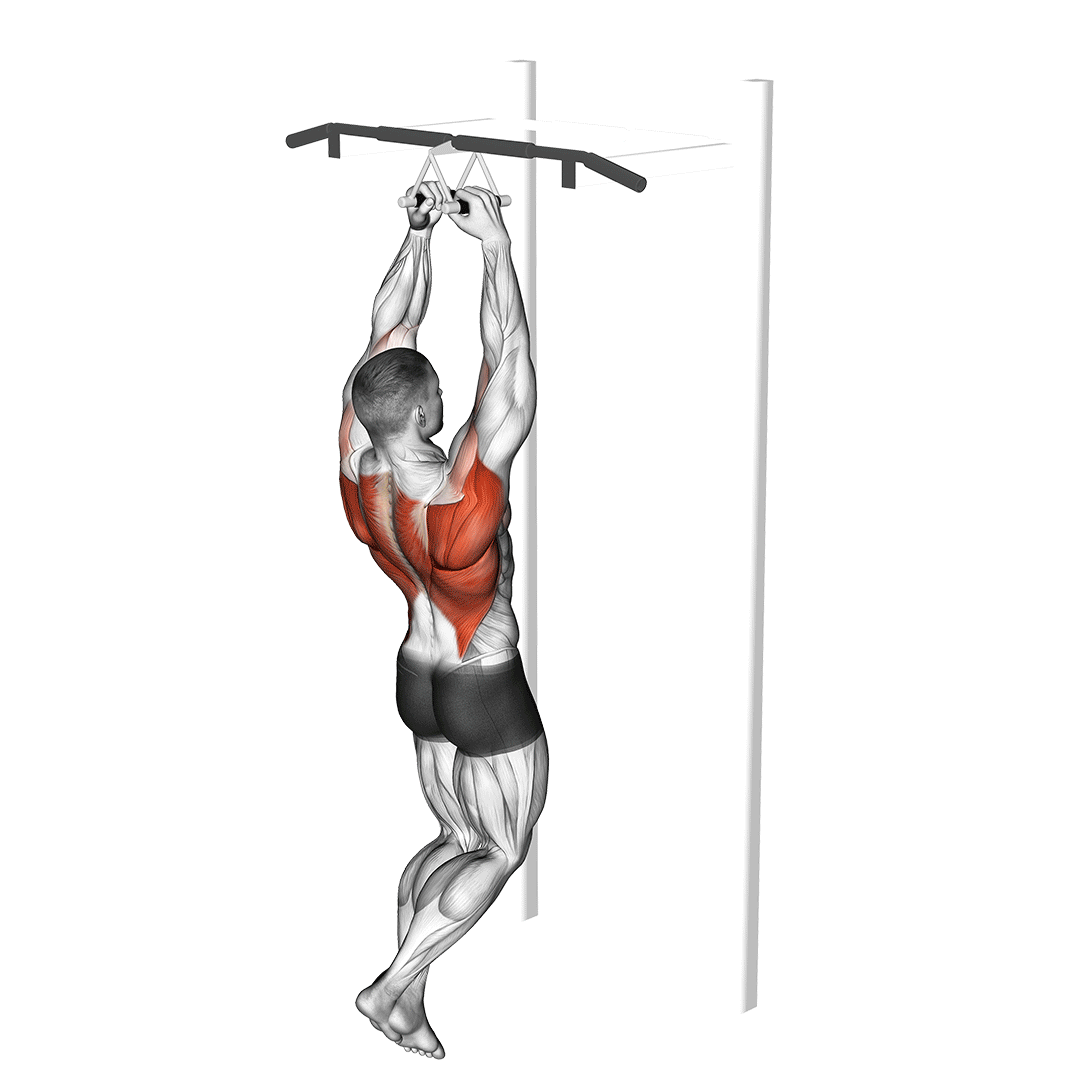Narrow Parallel Grip Chin-Ups are a powerful exercise to enhance upper back strength and overall fitness. This movement targets key muscle groups, primarily the latissimus dorsi, contributing to a stronger and more defined back while also engaging the biceps, forearms, and rear deltoids. Incorporating these chin-ups into your routine builds physical strength and boosts confidence as you conquer various fitness challenges.
To perform the exercise, stand beneath a chin-up bar with a narrow parallel grip. Engage your core, keep your elbows close to your body, and pull yourself upward until your chin clears the bar. Lower yourself with control, ensuring full arm extension. Aim to include Narrow Parallel Grip Chin-Ups two to three times per week, allowing adequate recovery to maximize strength gains and prevent injury.
Safety is crucial; avoid common mistakes such as swinging your body or flaring your elbows. A sturdy chin-up bar is all you need, and beginners can use resistance bands for assistance. With consistent practice, you’ll strengthen your upper back, expand your abilities, and prepare for more demanding workouts ahead. Start today to unlock your potential.
How to Perform Narrow Parallel Grip Chin-Ups

Follow these steps to execute the Narrow Parallel Grip Chin-Up with proper form:
- Stand beneath a chin-up bar equipped with parallel handles. Grasp the handles with a neutral grip (palms facing each other), hands shoulder-width apart.
- Hang fully extended from the bar with your arms straight, engaging your core muscles and pulling your shoulder blades down and back.
- Bend your elbows and pull your body upward toward the bar, keeping your elbows close to your sides.
- Continue pulling until your chin is above the bar, squeezing your back muscles at the top of the movement.
- Lower your body back to the starting position with control, fully extending your arms.
Exhale as you pull up and inhale as you lower yourself down. Maintain a smooth and controlled motion throughout the exercise.
Common Mistakes to Avoid
Avoid these common errors to ensure effectiveness and prevent injury:
Level Up Your Fitness: Join our 💪 strong community in Fitness Volt Newsletter. Get daily inspiration, expert-backed workouts, nutrition tips, the latest in strength sports, and the support you need to reach your goals. Subscribe for free!
Level Up Your Fitness: Join our 💪 strong community in Fitness Volt Newsletter. Get daily inspiration, expert-backed workouts, nutrition tips, the latest in strength sports, and the support you need to reach your goals. Subscribe for free!
- Using Momentum: Swinging your body or kicking your legs reduces muscle engagement. Focus on controlled movements by engaging your core and minimizing body sway.
- Flaring Elbows: Allowing elbows to drift away from your body can strain your shoulders. Keep elbows tucked close to your sides to properly target the back muscles.
- Partial Range of Motion: Not fully extending your arms at the bottom limits strength gains. Ensure you lower yourself until your arms are fully extended before starting the next rep.
- Holding Breath: Neglecting proper breathing can decrease performance. Exhale as you pull up and inhale as you lower down to maintain oxygen flow and energy.
- Compromising Form for Reps: Performing too many reps with poor form increases injury risk. Prioritize quality over quantity to build strength effectively.
Benefits
Incorporate this exercise to reap the following benefits:
- Enhanced Upper Back Strength: Targets the latissimus dorsi, rhomboids, and trapezius muscles for a stronger upper back.
- Improved Grip Strength: The narrow grip challenges forearm muscles, enhancing grip strength beneficial for other lifts.
- Better Posture: Strengthening upper back muscles promotes spinal alignment and reduces back pain.
- Core Activation: Engages core stabilizers, improving overall core strength and functional fitness.
- Muscle Growth: Stimulates muscle hypertrophy through bodyweight resistance, aiding in increasing muscle mass.
Variations
To diversify your workout and challenge your muscles differently, try these variations:
- Assisted Chin-Ups: Use a resistance band or assisted machine to support part of your body weight, ideal for beginners building strength.
- Weighted Chin-Ups: Add extra weight using a dip belt or weighted vest to increase intensity once bodyweight chin-ups become easier.
- Slow Eccentric Chin-Ups: Focus on lowering yourself slowly to enhance muscle control and strength during the eccentric phase.
- Alternating Grip Chin-Ups: Alternate between narrow parallel grip and other grips (overhand or underhand) to target different muscle groups.
Exercise Variations
Alternative Exercises
If you want to target similar muscle groups, consider these alternatives:
- Lat Pulldowns: Mimic the chin-up motion using a cable machine, adjustable for different strength levels.
- Inverted Rows: Use a barbell or suspension trainer to perform bodyweight rows, engaging the upper back and arms.
- Seated Cable Rows: Target the back muscles with seated rowing movements using a cable machine.
- Dumbbell Rows: Perform single-arm rows with dumbbells to focus on the lats and improve unilateral strength.
Alternative Exercises
Safety Precautions
Prioritize safety by following these guidelines:
- Warm Up Thoroughly: Engage in dynamic stretching and mobility exercises for shoulders and upper back to prepare your muscles.
- Ensure Proper Equipment: Use a secure chin-up bar that can support your weight. Check that the bar and handles are in good condition.
- Focus on Form: Maintain proper technique throughout the exercise to prevent injuries. If unsure, seek guidance from a fitness professional.
- Listen to Your Body: If you experience pain or discomfort, stop the exercise and assess your form or consider modifications.
- Progress Gradually: Increase intensity and volume over time as your strength improves. Avoid pushing too hard too quickly.
Final Thoughts
Incorporating Narrow Parallel Grip Chin-Ups into your workout routine is an excellent way to boost upper back strength and enhance overall upper body fitness. This exercise builds muscle, improves grip strength, and enhances posture. Stay consistent, focus on proper form, and you’ll see significant progress in your fitness journey.
Interested in measuring your progress? Check out our strength standards for Seated Cable Row, Dumbbell Row, Chin Ups, and more.








